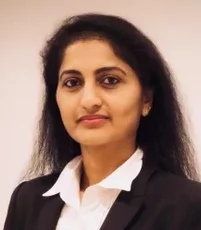
Mine isn’t one of those stories that start dramatically; I wasn’t writing code when I was ten or building robots in my early teens. A stroke of luck led me to computer engineering over two decades ago. My first brush with programming languages was in university where I learnt C & Pascal, how the world has changed since and so have I.
I stepped into the IT industry in an inventive workplace where my education grew obsolete quickly. I had to reconcile with terms I had not heard until then — pair programming and object-oriented paradigm. But I was curious and eager to learn. If there is one thing I have always done well, it is to be tireless in the pursuit of asking questions. This obsession has bode well over the years as I have had to navigate a landscape that is in a constant state of flux.
Throughout my journey, change and curiosity have been inseparable allies.
Being a developer in a consulting business compels you to understand the push and pull of different domains, tech stacks, architectures and designing systems. As I became a polyglot programmer and evolved an understanding of the art of solving problems, over time, I relegated the details of the execution such as the choice of programming language into the background.
After all, syntax and semantics don’t solve problems, people do!
That said, I do cherish the unparalleled joy of writing code. And even when I entered the next phase of my career as a technical principal, I continued to do so. As a leader, I was now compelled to step outside my bubble and look at the bigger picture. And although I bore several responsibilities such as working closely with the technology leads across several teams, focusing on cost in collaboration and making sure that solutions across different products for the same client were consistent, my greatest challenge was to manoeuvre through the complex dynamics that arise as different individuals within a team work towards achieving a singular outcome.
As I took on various leadership roles, it dawned on me that being a leader is not about you being an expert, it is about recognising the team’s strengths and weaknesses and having an appreciation of one’s own strengths and flaws. A good leader grounds the work in this sacred knowledge. But what is most imperative is that a leader listens to the people in her/his team. Empathy is vital, so is openness, trust and vulnerability. Leadership is not about creating an impenetrable fortress around you, it is the act of letting one’s guard down. Admitting your mistakes openly can set an unprecedented benchmark for transparency as I have discovered time and again.
My journey has been underlined by the myriad challenges of being a woman in a male-dominated industry. For several years, I was the only female developer in all-male teams. I was fortunate enough to work in an organisation that supported me through the often conflicting turmoil of my personal and professional life.
When I continued the next leg of my journey in Sahaj, I had high expectations. I was thrilled when I found here the same, familiar thread of trust, respect, curiosity and craftsmanship that has guided me so far in my career, nudging me ahead. A unique set of philosophies drive work and culture here, and in them, I find the reflection of my personal beliefs.
We don’t force-fit a certain technology into our solutions. Instead, our decisions are driven by a simple question — what is the right fit? I am part of teams that are compact but potent. The challenge of solving the most complex problems is assigned to a handpicked bunch of people in a team structure that is devoid of traditional roles such as BAs, QAs, etc. Both discovery and feedback cycles are remarkably short and effective. After being in the industry for almost two decades, I am discovering a whole new agile way of thinking and working that is astonishingly effective!
There is a refreshing openness and transparency in this organisation that permeates through computer screens where most of my conversations happen with colleagues. I feel an unprecedented sense of ease and fluidity that distills down to my expression of self and work and brings out the best in me. This unmatched simplicity of being, learning and creating is not merely an organisation, it is a sentiment — it is Sahaj.



